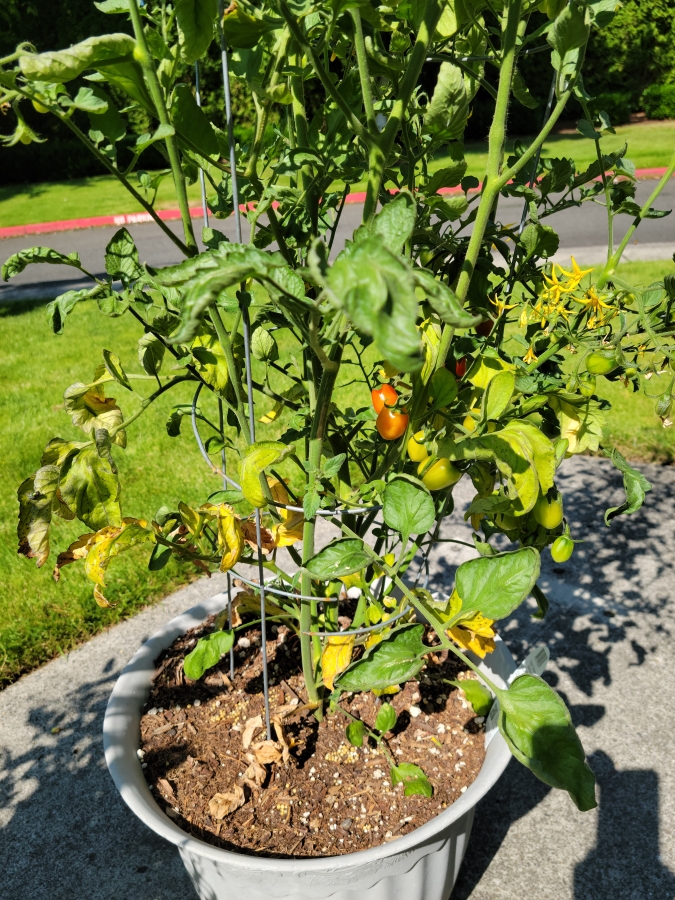The older leaves are turning yellow on my tomato plant in a large pot. Also my hanging baskets are looking a little off-color and are losing leaves. What do you think is causing this?
It sounds like you may be running low on fertilizer in both cases. Plants in containers have a more limited soil volume for their roots than those growing in the ground. Also they are watered more frequently. The water dissolves the fertilizer in the container and carries it beyond the roots.
The yellow leaves on the tomato plant are a dead giveaway that it needs nitrogen. When plants do not have enough nitrogen they transfer it from the older leaves to the new growth.
I like to give additional fertilizer to most of my vegetables and all flowers in early July. I don’t fertilize vegetables that mature very quickly like radish, spinach and lettuce. Instead I make additional plantings so I can pick them over a longer period. Those that continue to bear fruit, such as tomatoes and squash get an additional fertilization with 16-16-16. Most flowers also get 16-16-16. I use Osmocote for all containers. The coated pellets release fertilizer gradually every time the plants are watered. This keeps me from washing most of the fertilizer out of the container in the first few waterings.




